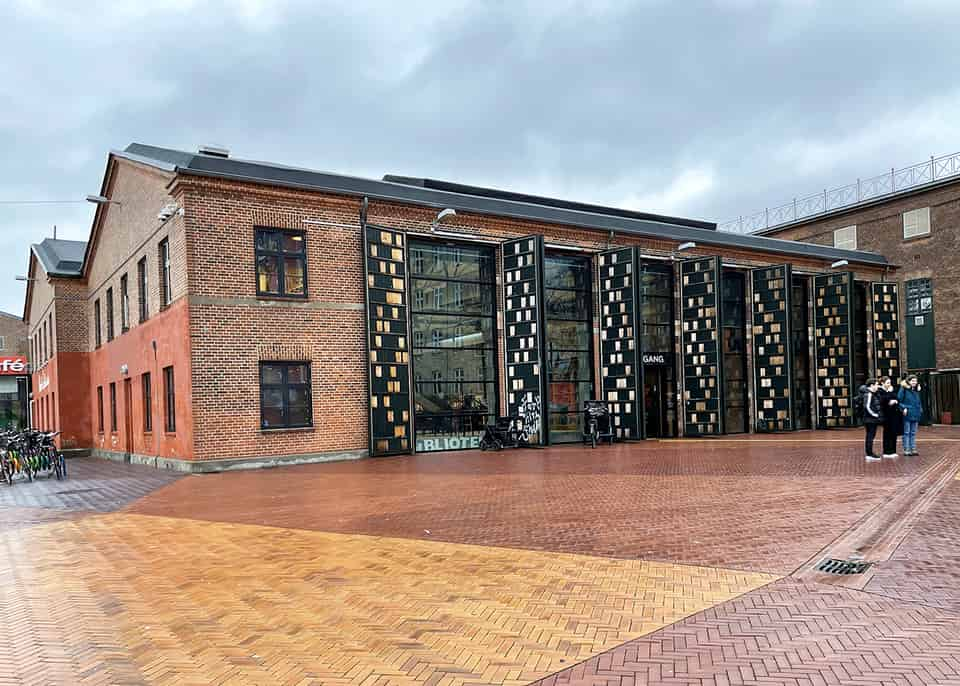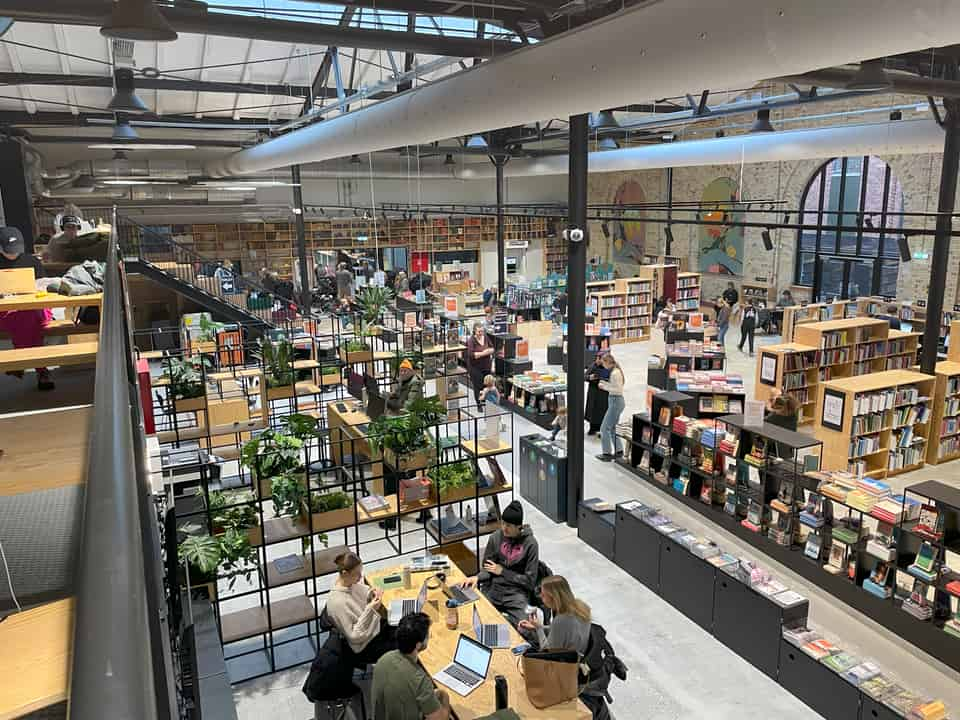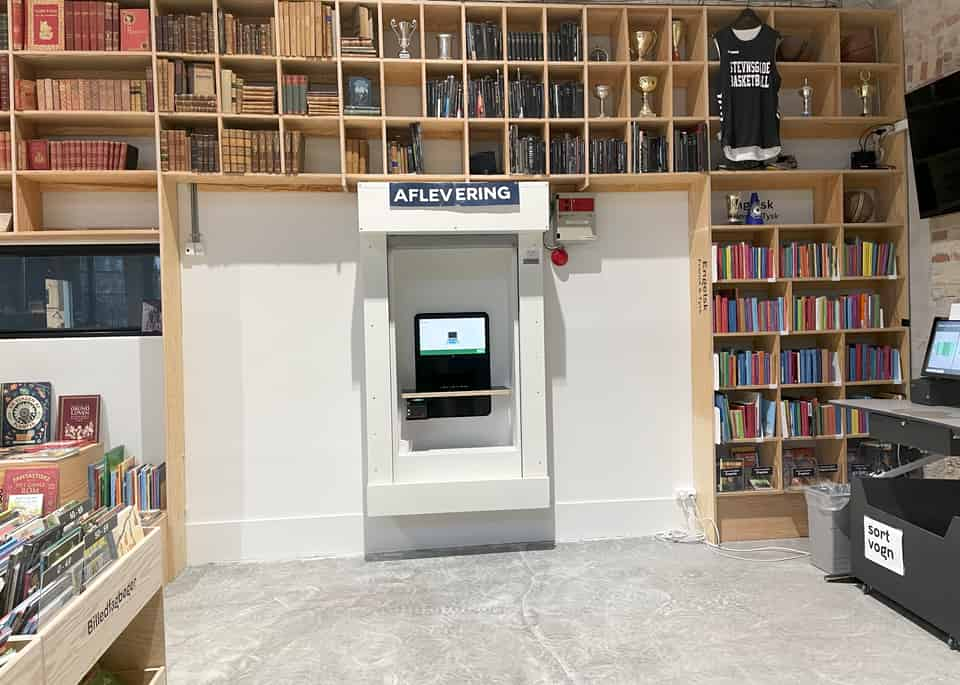Case Story: Nørrebro Library
Managing Growing Return Numbers with Automated Book Sorting
As Nørrebro Library continues to experience a rise in their circulation numbers, the implementation of a small sorting system onsite has been invaluable to the functionality of the library. Through a streamlining of their material handling processes, the library now handles more than 200,000 loans per year without difficulties.

About the Library
Nørrebro Library is part of the Copenhagen Libraries, located in the Northern part of the capital. In 2019, the library moved into Nørrebrohallen, the area’s sports and community center. Special for Copenhagen libraries is the organization of the library staff. Here the staff is split into two units: the logistical staff and the patron-facing staff. This means that the logistical staff handles all the transportation and handling of items, while the patron-facing staff can focus on hosting events and serving the library users. Nørrebro Library is one of the larger libraries in Copenhagen with big open spaces and a welcoming atmosphere.
Initial Situation
When Nørrebro Library moved into Nørrebrohallen in 2019, the layout of the library did not accommodate the efforts of a large and busy library. After the pandemic, the library’s location in a community center with many daily users caused the visitor numbers to grow considerably, and consequently so did the circulation numbers. Though the library was new and beautifully decorated, it did not function properly in this new busy situation to the frustration of both staff and patrons:
“The users simply could not figure out the return system, no matter what we tried with signage. So, when the staff came in the morning, there would often be books that were not placed correctly as they had been returned, or areas would be flooded with books. Then they would have to return the books again which is a big time robber. At one point it became so much that we began sending all the returns to our central sorting facility to be sorted instead of sorting them at the library. And more than 40% of the materials would come back to Nørrebro and be reshelved” says Christel Elbrønd Krabbenhøft, manager of logistics staff at Copenhagen Libraries.
Even after sending the materials to the central sorting facility, the logistics staff at Nørrebro Library was facing challenges with the functionality of the space. With no separate room for handling materials, they would often be disturbed by patrons during the unmanned opening hours, which again hindered the efficiency of their work.
Resolving the Issue
In 2023, Nørrebro Library, though fairly new, was set to undergo interior remodeling. These changes aimed to improve functionality for both the logistical and patron-facing staff. The main improvement of the remodeling was the creation of a dedicated logistics room:
“We started looking for alternatives for the logistics. And luckily there was an area between the library itself and a cafe area where we could set up a wall and create a logistics room. As that became a possibility, I started talking to Mogens Olsen (Lyngsoe sales representative) about how small of a sorter we could get. I went to Lyngsoe’s headquarters in Aars with two of my colleagues and saw the stand-alone modules that we could use to make the most of the space” says Christel Elbrønd Krabbenhøft.
It was decided to let the depth of the room be the deciding factor as to how big the sorter could be. It ended up with four modules and eight destinations with the possibility of a ninth, as staff can set up a dump at the end of the sorter when they leave for the weekend. Because the library was being remodeled at the same time, it was possible to consider the new return system both in terms of signage, but also in terms of the natural flow through the library.
The Results
As Nørrebro Library continues to experience a rise in their circulation numbers, the implementation of a small sorting system onsite has been invaluable to the functionality of the library. According to Christel Elbrønd Krabbenhøft, it also means a lot for her
staff’s working environment:
“It means a lot to the employees. Not only do they have that room where they can stand in relative peace and quiet and do their work, but the system also does all the bulk sorting for them. They can get straight to work afterward. And when you deal with those quantities of materials and returns, it has really streamlined our workflows at the library. That is what I wanted to test, because I think a lot of other libraries in Copenhagen might experience the same in the future, and I would just like the functionality to be considered from the beginning so that all new libraries are born with a logistics room.”
For the patrons, it has equally improved the return experience and made it all the simpler:
“There is actually a funny story about it. While one of Lyngsoe’s people was out setting up the last things on the system, and while there was still no signage, the patrons started returning books there on their own initiative. So, my employees had to go out and explain
that it was not working yet and that they could not return their books there. That is just to say that when you do a good behavioral design in the room, it is very easy for people to find their way.” Christel Elbrønd Krabbenhøft explains.
The Benefits
- Improved working conditions for logistics staff
- Heightened efficiency and no double-checking needed
- Ability to keep up with increasing circulation numbers
- Easy check-in process for patrons


